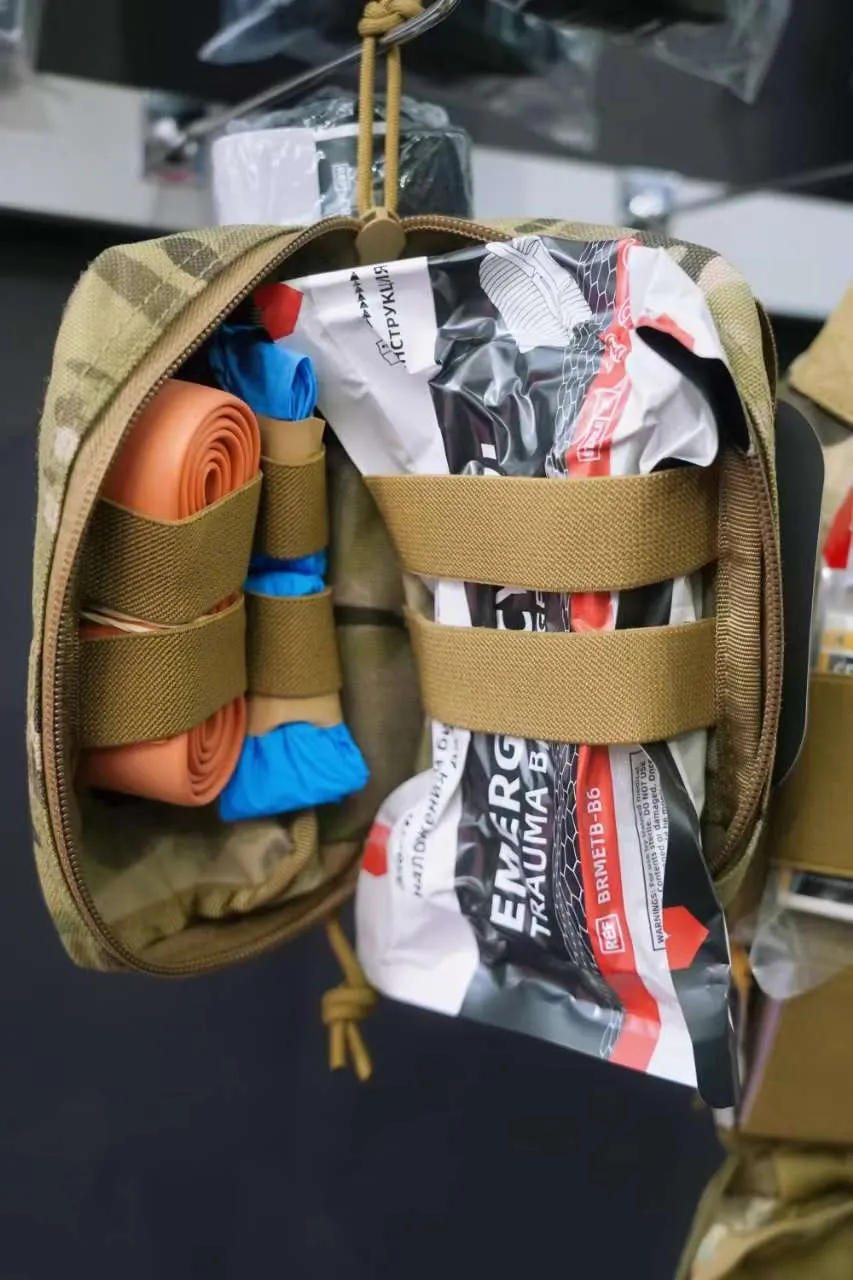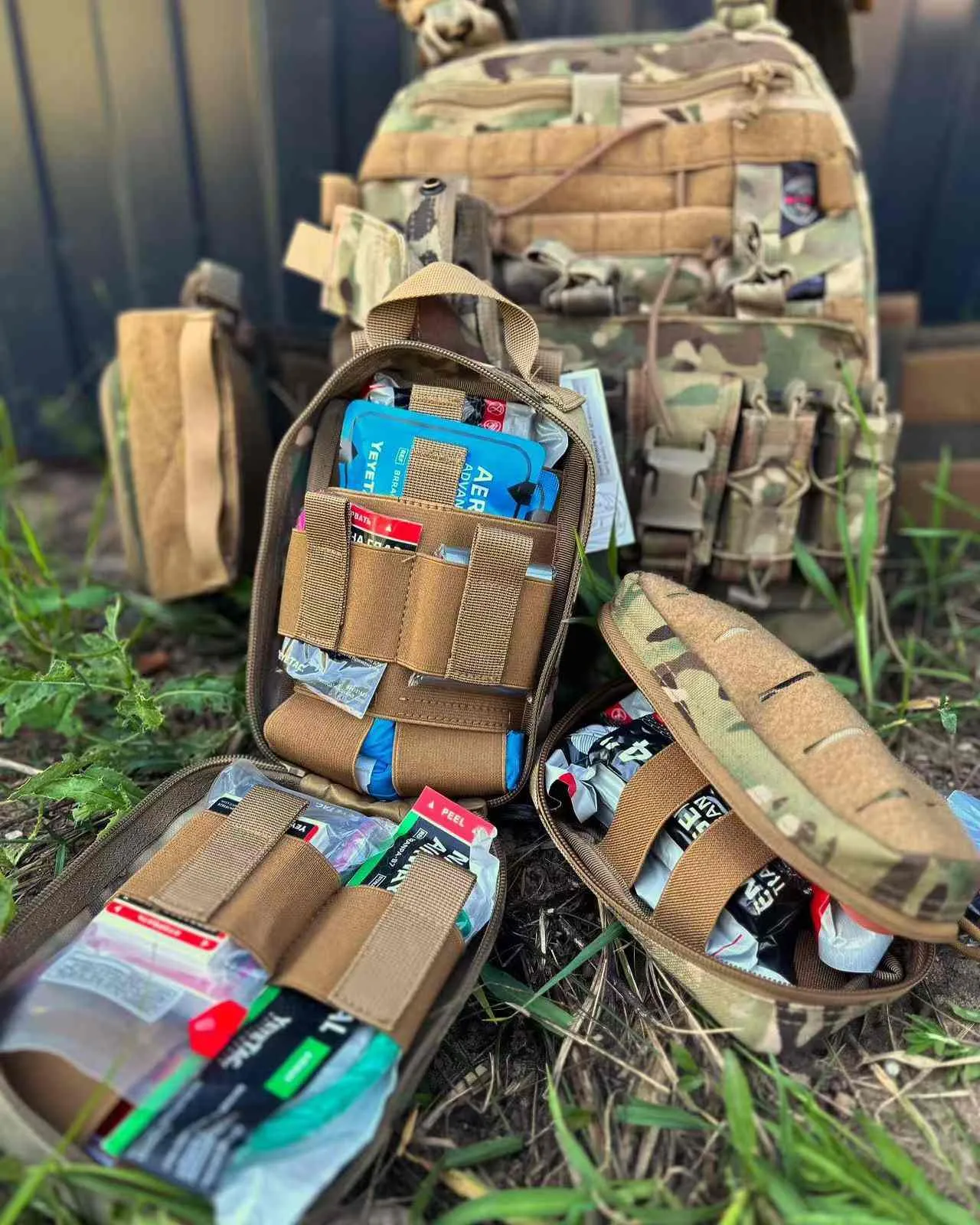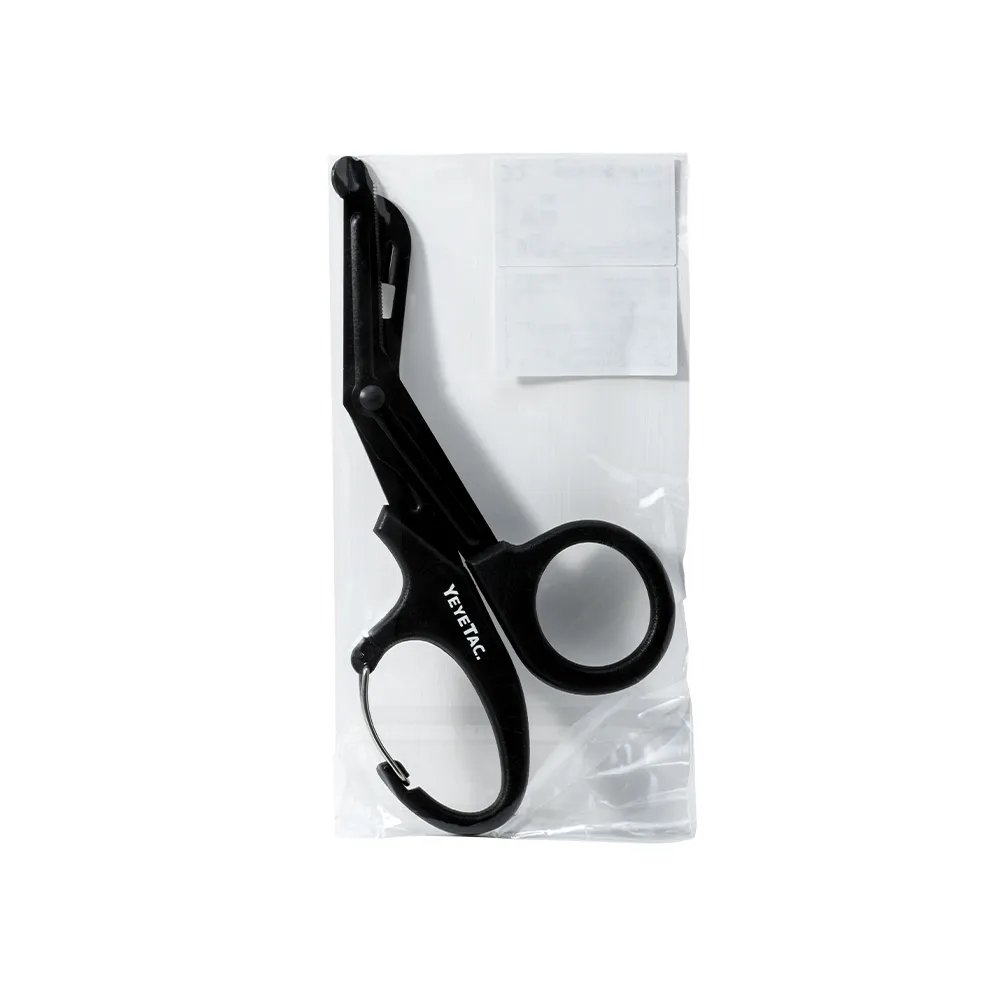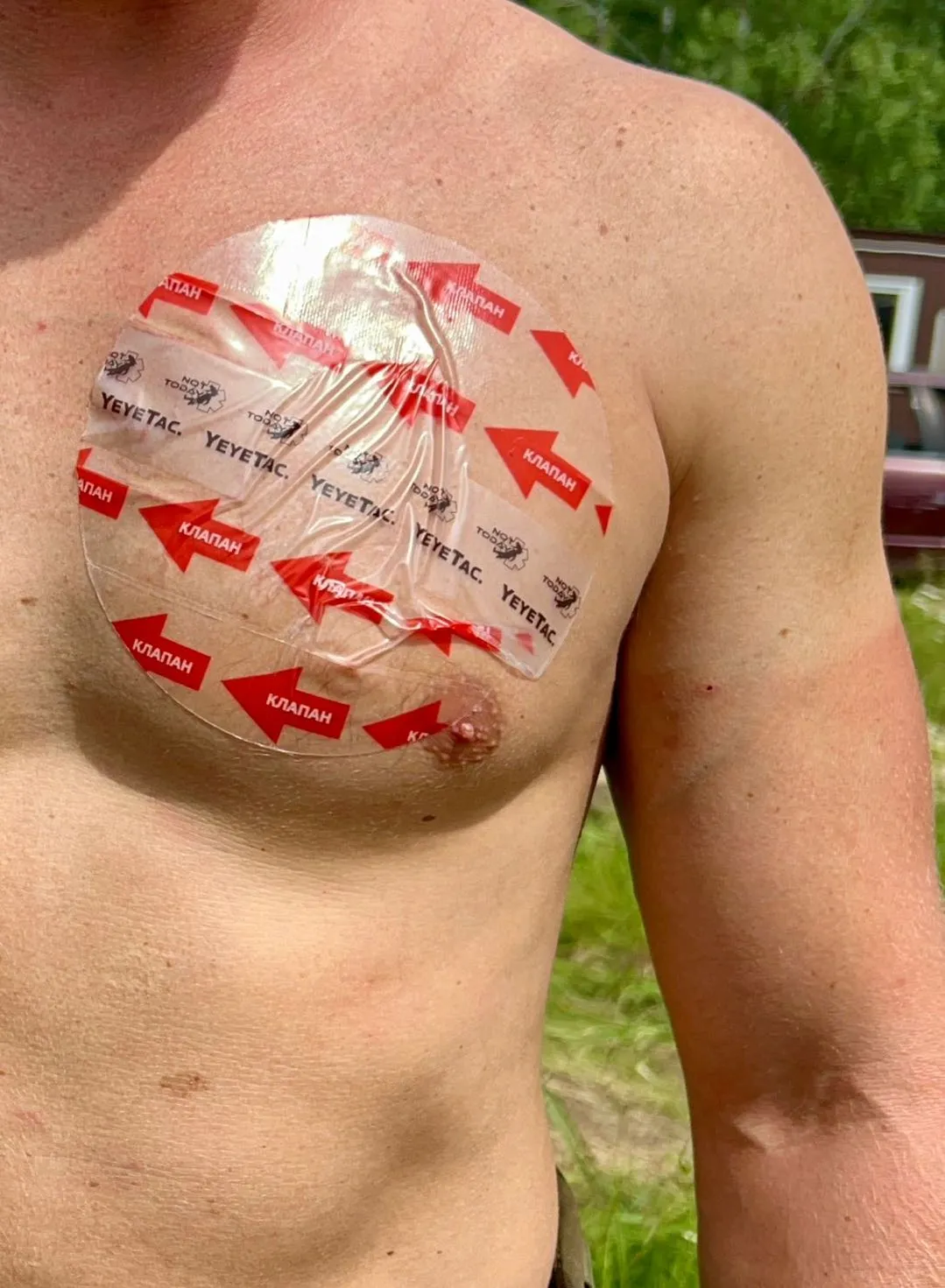Essential Components Every Customized Bleeding Control Kit Should Have
- YEYETAC™
- Oct 27
- 5 min read

A bleeding control kit is a specialized collection of medical supplies designed to address severe bleeding injuries. Many people die each year from blood loss, 30% of which occur within 24 hours of trauma. Having the right tools can mean the difference between life and death. The primary purpose of these kits is to buy crucial time for victims until professional medical help arrives.
Why Can't Regular First Aid Kits Meet Emergency Bleeding Needs?
A regular first aid kit and a bleeding control kit serve fundamentally different purposes. While most people have a basic first aid kit at home, these aren't designed to handle life-threatening bleeding emergencies. Understanding this difference can save lives.
Key Differences Between Regular First Aid Kits and Professional Bleeding Kits
Regular first aid kits contain basic supplies for minor injuries, while professional bleeding kits include specialized tools for life-threatening hemorrhage. The fundamental difference lies in their purpose and capability.
"A standard first aid kit might contain 20-30 adhesive bandages but lack even a single tool capable of stopping arterial bleeding," said an emergency medicine specialist.
The Golden 30 Seconds Principle: The Life and Death Boundary in Severe Bleeding
When severe arterial bleeding occurs, the human body can lose a dangerous amount of blood in just 30 seconds. This small window is often referred to as the "Golden 30 Seconds" among emergency response professionals.
Having a properly equipped bleeding control kit prepared in advance eliminates precious time otherwise spent gathering supplies during an emergency. Statistics show that immediate hemorrhage control intervention can increase survival rates by up to 90% in severe trauma cases. This stark reality underscores why specialized bleeding control components kept in an organized, accessible kit.
Skill Requirements: Training Differences
Anyone can use a regular first aid kit with minimal training. Bleeding control kits contain specialized equipment requiring proper training. Incorrect tourniquet application, for example, might fail to stop bleeding or cause tissue damage.
Consider taking a Stop the Bleed course to learn proper techniques. Many hospitals and community centers offer these programs.
Price vs. Quality Considerations
Professional bleeding control supplies cost more than basic first aid items due to medical grade materials and specialized features. Avoid kits marketed as "bleeding control" that mostly contain basic supplies. Look for tourniquets, hemostatic dressings, and other hemorrhage control items.
Find kits with genuine medical grade components without unnecessary extras. In life-threatening situations, equipment quality is critical.
Special Requirements for Different Environments
Different settings may require tailored bleeding control solutions:
Seven Core Components Every Bleeding Control Kit Should Include
1. Medical Gloves (Nitrile/Latex)
Nitrile or latex gloves protect both the responder from bloodborne pathogens and help prevent introducing contaminants into the victim's wound. Nitrile gloves offer superior puncture resistance and are latex-allergy friendly.
2. Trauma Shears
Trauma shears quickly cut through clothing, including tough materials like leather and denim. This allows access to wounds without unnecessary movement of the injured person. Look for shears with a blunt tip design that prevents additional injury during use.
3. Tourniquets
Tourniquets are critical devices designed to stop severe bleeding from limbs by compressing blood vessels. Modern combat-proven tourniquets like the CAT (Combat Application Tourniquet), SOF-T (Special Operations Forces Tactical Tourniquet), or SAM XT have revolutionized emergency bleeding control with their effectiveness and ease of application.
The latest generation of tourniquets can be self-applied with one hand, a crucial feature if you're treating yourself. When properly applied, a tourniquet should completely stop blood flow to the injured limb, which will be painful for the victim but necessary to prevent fatal blood loss.
It's vital to record the time of tourniquet application, typically written directly on the tourniquet or on the victim's forehead. This information is crucial for medical professionals who will ultimately treat the patient.
4. Compressed Gauze
When properly packed into a wound, compressed gauze creates pressure against bleeding vessels from within. This technique, called wound packing, is critical for deep penetrating injuries like gunshot or stab wounds.
Some specialized compressed gauze is vacuum-sealed and folded in Z pattern for quick deployment. This design allows responders to quickly grab and apply without wasting time unraveling traditional rolled gauze.
Important Considerations:
Z folded gauze format allows for wound packing
Active ingredients matter (kaolin, chitosan, or other FDA approved hemostatic agents)
Vacuum sealed packaging maintains sterility and extends shelf-life
Training in proper wound packing technique is essential for effectiveness
5. Trauma Bandages
Also known as "Israeli bandages" or emergency trauma dressings, trauma bandages combine an absorbent pad with an elastic wrap and closure bar, allowing for the application of direct pressure to wounds.
Key Features to Look For:
Built-in pressure applicator to concentrate force over the wound
Easy-to-use closure system that doesn't require knots
Elastic material maintains pressure consistently
Sterile packaging ensures wound safety
These bandages are particularly valuable for maintaining pressure on wounds after hemostatic agents have been applied, creating an integrated treatment approach for severe bleeding.
6. Chest Seals
Penetrating chest injuries require specialized management to prevent potentially fatal complications like tension pneumothorax. Chest seals are specifically designed occlusive dressings that prevent air from entering the chest cavity through open wounds.
Essential Features:
Strong adhesive that works on wet, bloody skin
Vented models with one-way valves allow air to escape without entering(For example, yeyetac)
Large enough to cover substantial wounds
Clear material allows wound monitoring
Most professional bleeding control kits include two chest seals to address both entry and exit wounds or multiple injuries.
7. Emergency Blanket
Severe blood loss leads to decreased body temperature, which can trigger additional complications like hypothermia. Emergency blankets (also called space blankets) help retain body heat in trauma situations.
Important Features:
Reflective material that preserves most of the body heat
Compact folded size for minimal kit space
Durable material resistant to tears
Windproof design to prevent convective heat loss
While not directly involved in bleeding control, emergency blankets play a crucial role in preventing the "trauma triad of death" (hypothermia, acidosis, and coagulopathy) that can develop after significant blood loss.
Conclusion
A properly equipped bleeding control kit with these seven essential components can mean the difference between life and death in emergency situations. Remember that having the right tools is only part of the solution and proper training in their use is equally important.
Contact us at support@tacticalmedicalkit.com for professionally designed bleeding control kits that meet the highest quality standards. We also have relevant product test reports and detailed information available for your reference.
FAQs
Can I assemble my own bleeding control kit instead of buying a pre-made one?
Yes, you can assemble your own kit, but ensure you purchase quality components from reputable medical suppliers. Follow professional configuration guidelines to ensure components work effectively together.
How should someone without professional training use a bleeding control kit?
Ideally, attend a basic bleeding control course like "Stop the Bleed." In emergencies without training, carefully read instructions on components before using them, apply direct pressure to wounds, and seek professional help immediately.
What are common mistakes to avoid when using a tourniquet?
Three critical errors include: placing it too low on the limb (should be high on the arm or leg), not tightening it sufficiently to stop blood flow, and failing to record the application time.
How can I verify the quality of a bleeding control kit?
Look for products with medical certifications, testing documentation, and high quality materials. Prefer brands with military or professional medical backgrounds. Avoid kits with excessive basic supplies like band-aids and alcohol wipes that displace critical bleeding control components.
How often should components in a bleeding control kit be replaced?
Follow manufacturer recommendations for each component. Generally, sealed sterile dressings have a 3-5 year shelf life, while tourniquets and shears can last longer if stored properly. Regularly inspect all items for damage or degradation.









